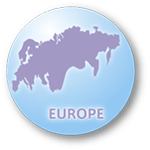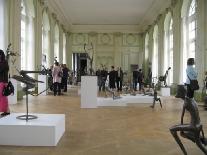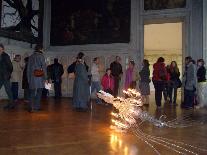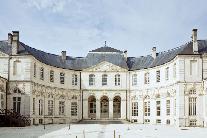EUROPE
World Centre for Peace, Liberty and Human Rights (France)
(Aug. 28, 2009)
by Sébastien Brizion, Communications Director
The Centre Mondial de la Paix, des Libertés et des Droits de l’Homme (World Centre for Peace, Liberty and Human Rights), located in the city of Verdun, in northeastern France, near Belgium, was the site of one of the harshest battles in human history. The main objective of the Centre, through its activities, is to provide testimony, raise awareness, and help prevent conflict.
The Battle of Verdun, a symbol of World War I, is considered the greatest and lengthiest in world history. Never before or since has there been such a lengthy battle, involving so many men, situated on such a small piece of land. The battle between Germany and France, which lasted from 21 February 1916 until 19 December 1916 caused over an estimated 700,000 casualties (dead, wounded and missing). The battlefield was not even ten kilometres square.
The Centre organizes many events on the theme of Peace, Liberty and Human Rights that invite us to reflect on these matters, including symposiums and conferences on international issues, expositions, cultural gatherings, various meetings and assemblies. The Centre organizes art and historical exhibitions, with works from renowned artists on the themes of Peace, Liberty and Human Rights. These exhibitions are held at the Centre along with the permanent exhibition “De la Guerre à la Paix” (“From War to Peace”).
The permanent exhibition summarizes the origins of war, presenting the different conditions that have led to war in the past, such as to gain territory or resources, as well as alliances between countries. It then explains the measures that have been created in order to prevent war, involving such factors as human rights, NGOs, and the media.
The bishop’s palace that houses the Centre Mondial de la Paix since 1994 bears magnificent witness to Verdun’s extraordinary architectural heritage. L’Association du Centre Mondial de la Paix, des Libertés et des Droits de l’Homme (the Association of the World Center for Peace, Liberty and Human Rights) was established in 1990 in Verdun on the initiative of the town council at the time. The objective was to defend and promote peace in the world.
The palace resides in proximity to the cathedral and the cloister, on a true religious acropolis that towers over the town below. The original palace was created by the bishop Nicolas Psaulme as a residence in 1548. In 1723, Monseigneur d’Hallencourt judged the palace to be outdated and so summoned Robert de Cotte to construct another in its place. It was here that the bishop resided until the French Revolution and then from 1823 until the opening of the Centre Mondial de la Paix. Adding to the building’s beauty are the prince-bishop’s gardens, reconstructed during the 18th century in a pure classical French style. During the battle of Verdun, the palace sustained serious damage and was later restored.
Today, the Centre promotes peace through a variety of activities and exhibitions. Most recently, it has held exhibitions such as “les Jeunesses Hitlériennes” (“Hitler Youth”), “Dessins pour la Paix” (“Cartooning for Peace”), and work by the artists Patrick Neu and Eric Poitevin in association with the Centre Pompidou-Metz. We also organize international peace meetings almost every year by inviting young adults from areas suffering conflict or ethnic tensions, such as a group of Palestinians from Gaza and a group of Israelis from Israel or people from the three different communities of Bosnia-Herzegovina. In these meetings the participants are guided to discuss their situations and understand that “peace” is something that must be preserved.
Address: Place Monseigneur Ginisty BP 10183 55100 VERDUN France
Phone: +33 (0)3-29-86-55-00
Homepage: www.centremondialdelapaix.eu
Days closed: Mondays, Christmas week
Admission: 3 euros for adults; 1.5 euros for students under 18; free for children under 12
(Originally published on August 18, 2009)
 Peace Museums of EUROPE
Peace Museums of EUROPE


